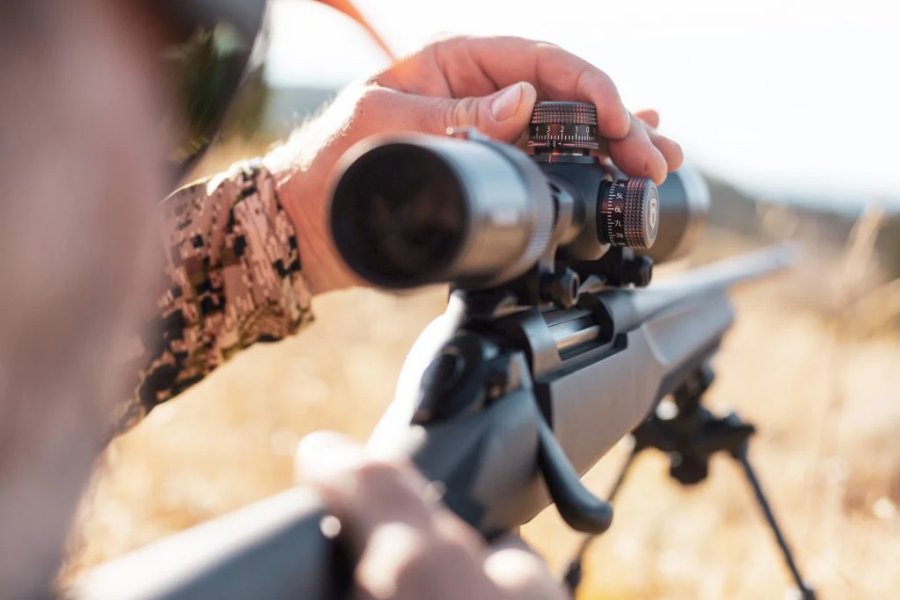The Benefits and Best Uses of LPVO Scopes for Mid-Range Shooting

Low power variable optics have become one of the most preferred rifle optics for modern shooters. Their ability to shift from a true 1x view to higher magnification gives them a level of flexibility that red dots and traditional scopes cannot match. An LPVO scope supports fast close-range shooting and precise mid-range engagement, making it a practical choice for hunters, tactical shooters, and anyone who wants a single optic capable of handling a wide range of distances.
An LPVO scope sits between simple reflex sights and fixed high-magnification scopes. With the rising popularity of the AR platform, compact carbines, and versatile hunting rifles, more shooters are looking for rifle optics that can adapt to changing environments without adding complexity. This combination of speed, magnification, and real-world usability is why low power variable optics continue to grow in demand.
What an LPVO Scope Is Designed to Do
An LPVO scope offers a magnification range that starts at 1x or very close to it, allowing the shooter to use the optic much like a red dot. When magnification increases, usually up to 4x, 6x, 8x, or 10x, the optic offers clarity for more precise mid-range shots. This variable capability gives shooters the ability to maintain situational awareness at close distances while still having the precision needed for longer shots.
At 1x magnification, the shooter can keep both eyes open, track moving targets, and transition between multiple objects quickly. As the magnification increases, the LPVO begins to behave like a traditional scope, helping shooters identify fine details, confirm target features, and hold more stable sight pictures.
This flexibility is what makes LPVO scopes appealing for many kinds of rifles, from semi-automatic platforms to lightweight hunting guns.
Why LPVO Scopes Have Become So Common
The growing popularity of the LPVO can be traced to improvements in optical technology and a broader understanding of real-world shooting needs. Shooters want tools that are efficient and streamlined. Instead of switching between a red dot and a magnified optic, one low power variable optic can handle both roles with ease.
Modern LPVO scopes also offer clearer glass, stronger illumination, and more rugged construction than earlier generations. As these improvements become more affordable, the optics attract both professional and recreational shooters. Many competitive shooting sports now include stages where targets appear at mixed distances, and an LPVO allows competitors to engage them fluidly.
The design also works well for shooters who carry rifles in unpredictable environments. Whether moving through wooded terrain or open fields, the shooter can adjust magnification instantly to match changing conditions.
Performance in Mid Range Shooting
Mid-range shooting typically covers 100 to about 500 yards. LPVO scopes excel here because they offer enough magnification to improve accuracy without limiting the shooter’s field of view. The optic allows the shooter to observe more detail, maintain better holdovers, and steady the reticle for precise hits.
At lower magnification, around 2x to 4x, shooters can still move quickly between targets and maintain awareness of their surroundings. At higher magnifications such as 6x or 8x, shooters gain the advantage of more defined sight pictures, especially when facing small steel plates or targets that require accurate shot placement.
Many LPVO scopes offer advanced reticles with hash marks or holdover lines that help with elevation and wind estimation. This adds functional value without requiring turret adjustments during shooting. Reticles optimized for mid-range use can significantly improve consistency and reduce guesswork.
Ideal Uses for an LPVO Scope
LPVO scopes shine in scenarios where distances shift quickly. Hunters often work through mixed terrain and cannot predict how far the shot will be. When game appears unexpectedly close, 1x magnification helps hunters locate and react quickly. When game appears farther away, the added magnification improves accuracy and confidence.
Tactical and defensive users benefit from the combination of close-range speed and clearer mid-range identification. A low power variable optic allows shooters to respond quickly while still maintaining the option to magnify when needed. This is useful for identifying details such as equipment, posture, or movement in complex environments.
For recreational shooters, an LPVO scope makes range sessions more efficient. Instead of changing optics, shooters can transition between drills, adjust magnification during training, and work on both speed and precision without modifying their setups.
Factors to Consider When Choosing an LPVO Scope
Magnification range is the starting point when selecting an LPVO. Shooters focused on speed may choose 1-4x or 1-6x models. Those who want more mid-range capability may prefer 1-8x or 1-10x. The ideal choice depends on how frequently the shooter expects to operate beyond 300 yards.
Glass clarity and overall lens quality should also be considered. Clearer glass improves performance in low-light conditions and makes target identification easier. Eye relief and eye box forgiveness matter for shooters who move frequently between positions or shoot on the move.
Reticle style is another important feature. First focal plane reticles adjust with magnification and allow accurate holdovers at any zoom level, while second focal plane reticles remain the same size and offer a simpler view, especially at low magnification. Shooters should choose based on whether they value precision or simplicity.
Durability, weight, turret construction, and illumination also influence overall performance. Many LPVO scopes feature strong housings that can resist recoil and impact. Lightweight designs help maintain balance on the rifle. Illumination is helpful in low light or in indoor environments where contrast is limited.
Training With an LPVO Scope
Learning to use an LPVO effectively involves more than understanding magnification ranges. Shooters benefit from practicing transitions between low and high settings. Training at 1x is important because it allows the optic to function like a red dot. This includes learning to shoot with both eyes open, practicing fast target transitions, and developing a clear sense of where the reticle sits during rapid movement.
Training at higher magnifications helps shooters understand how the reticle behaves and how much stability is needed. Practicing with holdovers and wind estimation improves mid-range accuracy. Many shooters find that an LPVO teaches them better fundamentals because it demands consistent cheek weld and eye alignment.
Another useful skill is learning to adjust magnification without disrupting the shooting position. The shooter should practice moving the magnification ring smoothly while maintaining a stable stance. This is especially important for competition and field shooting.
Zeroing at the correct distance also matters. Many shooters prefer either a 50 yard zero for carbines or a 100 yard zero for more traditional rifles. Understanding how the bullet behaves beyond the zero point helps prevent missed shots at longer distances.
Why LPVO Scopes Continue to Influence Modern Rifle Setup
LPVO scopes have changed how many shooters configure their rifles. Instead of needing two different optics for varied distances, they can rely on one optic that performs well across a wide spectrum. Improvements in manufacturing have made LPVOs more reliable, brighter, and more practical for everyday use.
The versatility they offer means shooters can approach unpredictable environments with confidence. Whether moving through dense cover, entering open spaces, or shooting on uneven terrain, the shooter can adapt quickly with a simple magnification adjustment. This adaptability has made LPVO scopes popular among professionals and hobbyists alike.
As companies develop better lens coatings, more advanced reticles, and more durable housings, LPVO scopes continue to push the boundaries of what an all-purpose optic can be. The platform remains attractive to anyone who wants a practical balance of speed, clarity, and reach.
Final Thoughts
LPVO scopes offer shooters a practical middle ground between red dots and high-power optics. Their flexibility makes them useful for close-range movement, mid-range precision, and everything in between. For hunters, tactical shooters, and recreational users, an LPVO scope provides a dependable and adaptable solution that fits many real-world situations. If you’re looking to upgrade this season, Pinty is currently offering a Black Friday deal—enjoy 20% off on orders $30+ and gear up with quality optics at an unbeatable value.





